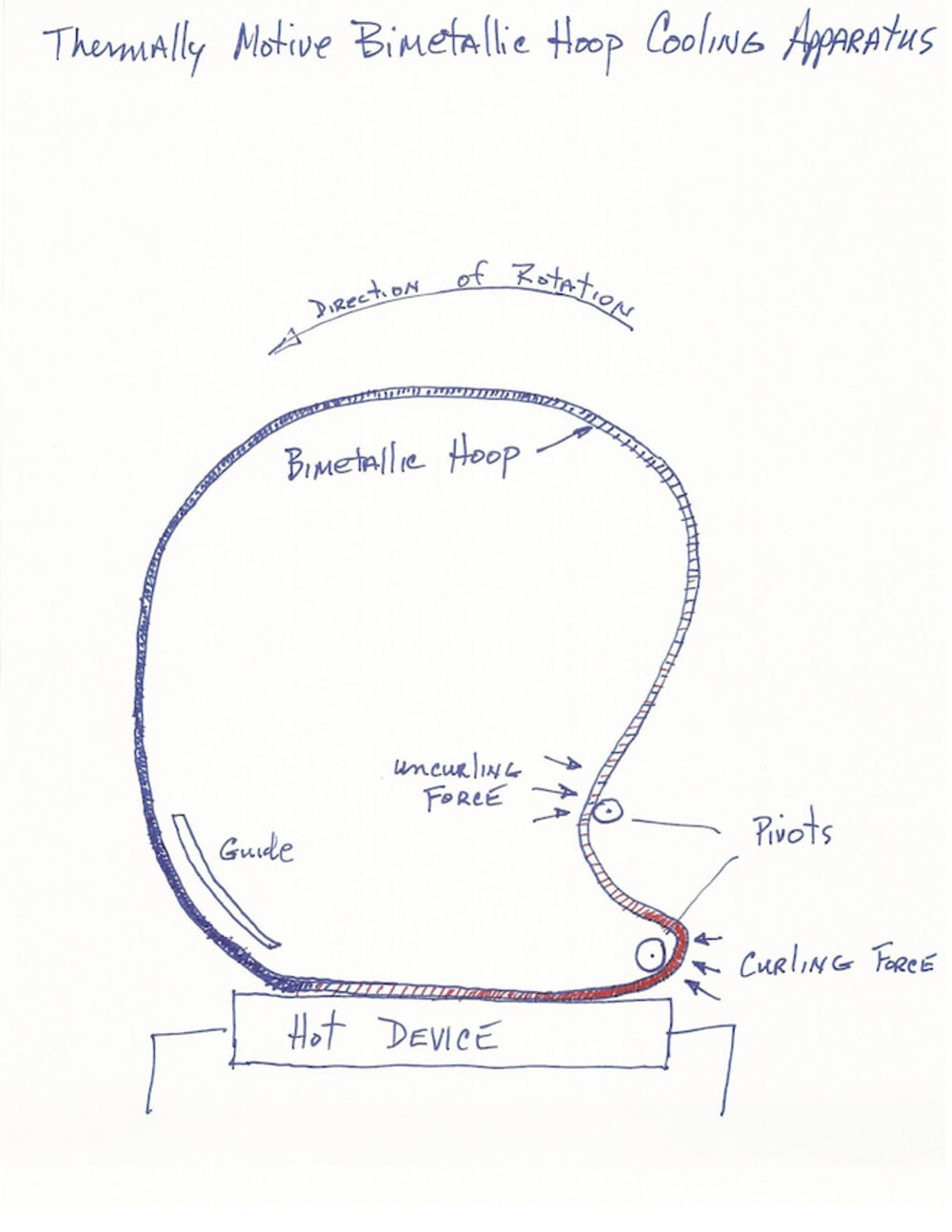Excess heat is a problem in electronic systems. Traditional solutions involve conducting heat energy away from the heat generating device through a heat sink to be dissipated to moving air or liquid. Improvements in thermal design typically relate to trying to move more heat energy through the heat sink as quickly as possible so that the temperature differential will allow the attached heat sink to absorb and dissipate more heat. If the heat sink cannot conduct enough heat energy quickly enough, the device may overheat. The highest temperatures are typically at the point of contact between the heat sink and the device.
This apparatus involves, in essence, a moving point of contact or, a moving heat sink. Heat energy is absorbed and carried away by means of a bimetallic hoop. The heat energy itself causes mechanical rotation of the hoop. This carries thermal energy away from the device, where it is dissipated and then provides a continual supply of cool material back to the device.
This apparatus takes advantage of curling and uncurling caused by changes in temperatures due to different thermal expansion characteristics of two dissimilar metals that are fused together. The bimetallic hoop will be manufactured by a chemical vapor deposition process around a rod or inside a cylinder and then cut into small hoops.
There are only a few other components. These are fixed pivots, around which the curling section of the hoop will, in essence, pull itself forward. Another pivot will assist in pushing the hoop forward as it uncurls. A roller, or guide on the "cool side" will keep the hoop in position. The packaging of the heat generating device may be made concave for better contact with the hoop.
The apparatus does not require outside power and adjusts its own speed according to the amount of heat absorbed. This could be designed as an add-on device or part of the device packaging. One cooling apparatus could be used for multiple heat generating devices, or even whole circuit boards. Since it converts excess heat to mechanical movement, it could be the basis for energy harvesting. The concept is scalable and could be used for huge power transformers down to micro-electro-mechanical systems.
Like this entry?
-
About the Entrant
- Name:David Donohoue
- Type of entry:individual
- Patent status:none

